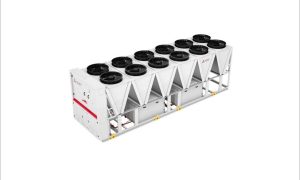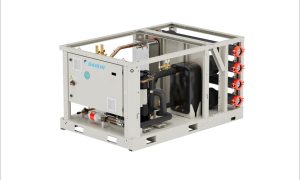As population grows and the economy undergoes transformation, the air conditioning sector is expanding in the country, says Pradeep Bakshi, MD & CEO, Voltas Ltd. Factors like improved affordability, emphasis on energy efficiency, digital penetration, and rising expectations drive this growth.
What market growth do you see for air-conditioning and cooling today?
The Indian air conditioning market is projected to reach US$ 4.5 billion by FY28, with a compound annual growth rate (CAGR) of 10-12 percent. Initially, the residential air conditioner category was expected to experience double-digit growth due to the early arrival of summer. However, unexpected rains during the season may result in single-digit growth for the industry this year. As India’s population grows and the economy undergoes transformation, the air conditioning sector has become one of the rapidly expanding industries in the country. Changing lifestyles, such as the rise of nuclear families, single-person households, and hybrid job models, have contributed to the increasing demand for cooling products. Factors like improved affordability, emphasis on energy efficiency, digital penetration, and rising aspirations drive this growth.
The boom in infrastructure projects and urbanisation has led to more people residing in compact apartments and homes, creating a need for smaller, more efficient air conditioning solutions. This will be followed by the commercial air conditioning sector primarily due to rising demand from various sectors such as commercial buildings, hospitals, and industries.
What energy star rating developments are emerging in the price-sensitive air-conditioning market?
When considering the purchase of a 5-star rated appliance, it is essential to consider that despite their higher initial cost, they have the potential to yield significant power bill savings based on your city’s electricity consumption and tariff. These appliances can offer long-term financial advantages by consuming less energy. Although the upfront expense may be greater, the accumulated savings from reduced operating costs over time will compensate for the additional price paid during the purchase. Therefore, for consumers seeking long-term energy bill savings, opting for a 5-star-rated appliance can be a smart and cost-efficient decision.
Please talk about the recent introduction to Voltas product range.
Voltas has introduced its latest Inverter ACs to provide efficient and customisable air conditioning. This range includes India’s first AC equipped with a HEPA filter, PM 1.0 sensor, and AQI indicator, ensuring purified indoor air. Additionally, it features a 6-stage adjustable mode that allows users to switch between different tonnages based on room conditions. The range offers innovative features like silent operation, ice wash technology, filter cleaning indicator, and anti-corrosive coating, resulting in cost savings and improved performance.
Moreover, Voltas has launched an extensive range of Voltas FreshAir Coolers, which come with advanced features such as a smart humidity controller, 4-sided honeycomb padding for efficient cooling, mosquito repellent, 7-hour timer, turbo air-throw, and low energy consumption. These coolers incorporate cutting-edge technology to enhance convenience and revolutionise the air cooler industry in India.
Moreover, IoT has permeated various aspects of our lives, enabling companies to become more adaptable through software, online platforms, and interconnectedness. Voltas leverages IoT in its commercial AC business to remotely monitor chillers at customer locations, minimising system downtime and facilitating preventive maintenance. The same technology is also applied to smart ducted AC systems, particularly suitable for retail applications.

What are your suggestions for preferred cooling equipment systems in production facilities?
Centralised air conditioning or air cooling systems are crucial for production facilities, as they require monitoring of indoor temperature and relative humidity tailored to the specific application. Input from end users is gathered to determine the system design, including the operating capacity output (in tons) and the required quantity of dehumidified air (supply air). This information helps assess the AC requirements accurately.
Additionally, process cooling might be needed using chilled water or chilled brine. The specific cooling requirements are obtained from end users, and centralised cooling systems are then offered and installed accordingly.
Production facilities typically require Chillers (LTR & Water cooled), package ACs and ducted systems.
What emerging opportunities are currently developing in the air cooler market in India?The air cooler market in India is undergoing rapid evolution, driven by factors such as rising temperatures, urbanisation, and increased disposable incomes, which are creating new opportunities.
- Introduction of smart air coolers: With the increasing adoption of smart home appliances, there is a growing demand for air coolers that can be controlled through smartphones and other devices. Companies are introducing smart air coolers that can be operated through mobile apps and voice assistants.
- Energy-efficient air coolers: Energy-efficient air coolers are gaining popularity in India due to rising electricity costs and growing environmental concerns. Companies are introducing air coolers with advanced technologies such as inverter motors, smart sensors, and low power consumption to reduce energy bills.
- Air coolers with advanced features: Companies are introducing air coolers with advanced features such as air purifiers, humidity control, and mosquito repellent technology. These features make air coolers versatile and valuable for different segments.
Cookie Consent
We use cookies to personalize your experience. By continuing to visit this website you agree to our Terms & Conditions, Privacy Policy and Cookie Policy.















